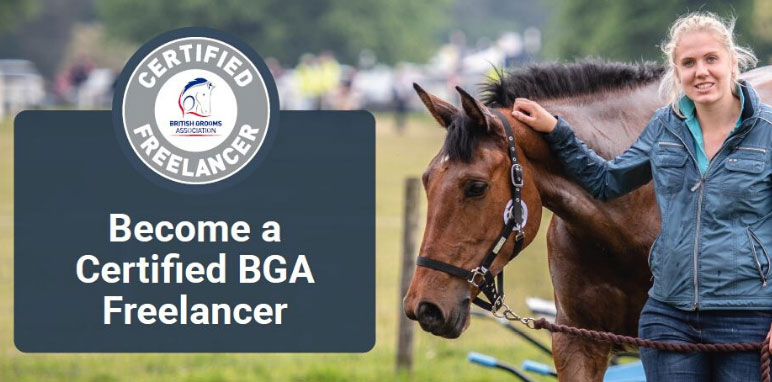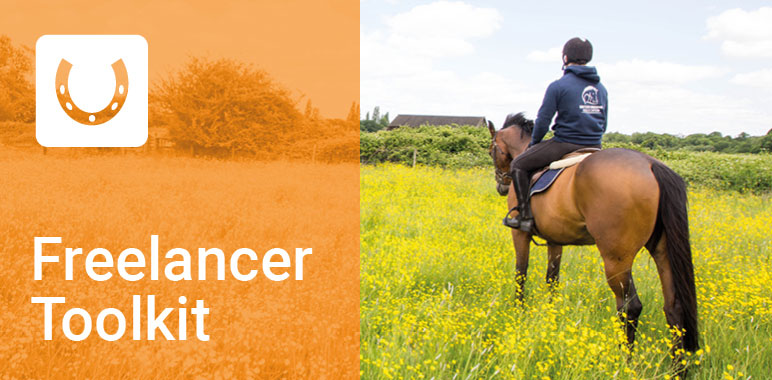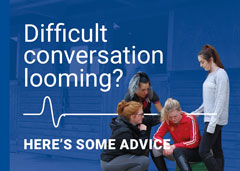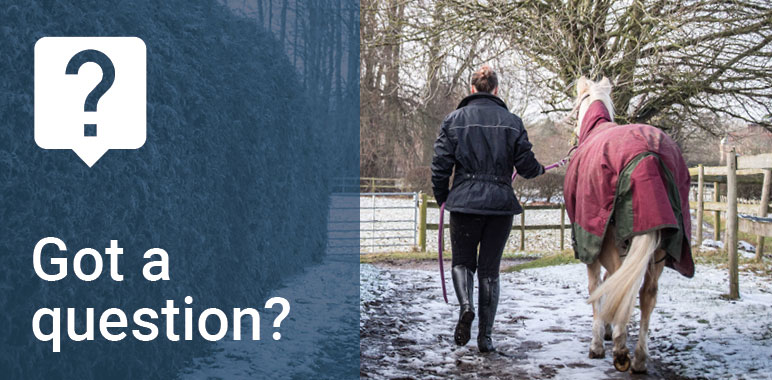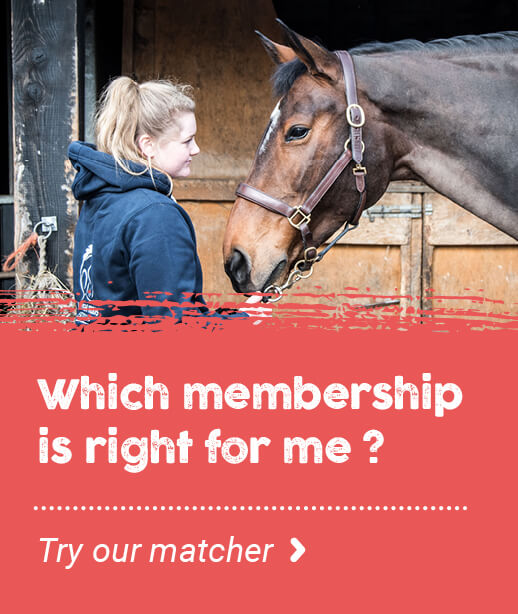- Join Now
- Login
- Member Zone
- Your Career
- Freelancing
- International Grooms Association
- BGA Training
- Healthy Yard Healthy Horses
- Transporting horses
- Brexit
- Safe workplace
- Student Zone
- Member Discounts
- BG Magazine
- Member services
- My employment
- Am I employed correctly
- Grooms Minds
- Safeguarding
- Legal Helpline
- BGA guide to the National Minimum Wage
- Training & Careers
- BGA CV Creator
- Horse groom training
- Where to Train
- BGA E Learning
- Career choices
- Change to Racing
- First Aid training for grooms
- Parents
- Grooms Jobs
- Grooms Life
- About
- News
- Contact


Kay Patterson from Medi-K gives an insight of what to expect and what you will learn. The BGA are delighted to have teamed up with Medi-K to offer a 'Certificate in First Aid Essentials', a bespoke online first aid course that any groom or yard manager can take. This online first aid training equips you with the skills and knowledge which could help to save someone’s life. This is FREE for BGA members and can be accessed here (you will need to be logged in to your account). Day in the life of becoming a First Aider
26th October 2018
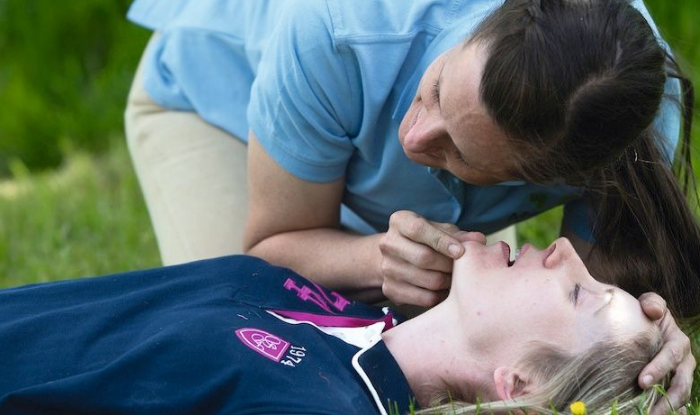
So, your workplace has advised you need to complete a First Aid course? If you’re someone who has never completed First Aid training before you might be wondering ‘What really happens at a First Aid course?’ The answer is you learn the skills required to provide lifesaving First Aid, and here is how.
First aid training could be most important course you’ve ever taken. In the event of an emergency, you’ll have the knowledge and confidence to deliver potentially life-saving assistance. Although many undertake training as part of a workplace requirement, these skills are invaluable in everyday situations and the course welcomes all individuals.
How to prepare
A day of practicing life-saving methods from the Abdominal thrusts to CPR can seem like a challenge. This encourages many to start researching first aid procedures in an effort to get a head start. Don’t make this mistake. A great first aid training course won’t require any prior knowledge of first aid or emergency response. In fact, attempting to learn for yourself beforehand may cause confusion when practicing the techniques. As the course is designed for complete beginners, you won’t be expected to know anything. Simply show up on the day with a positive attitude and willingness to participate in the practical scenarios.
What to Wear to Your First Aid Course
It’s advised all participants wear comfortable clothing that allows freedom of movement. First Aid courses involve many practical demonstrations which may require you to get onto your knees or down on the floor.
What to Bring to Your First Aid Course
There is a lot of content to be covered in a First Aid course so it’s always best to come prepared to ensure you’ll be ready for a full day of learning. Key items you should always bring to a First Aid course include:
• A body protector and hat if you have them
• A notebook to write down all the First Aid notes you need
• A pen or pencil for your notes
• A water bottle
• Lunch and snacks. Or if you have done your research and know there are cafés located nearby ensure you bring cash to buy your coffee, lunch or snacks.
What does the course involve?
For the popular 1-day Emergency First Aid at Work Course, attendees are taught a mixture of both practical and theory. You’ll learn how to examine a casualty, use a defibrillator, familiarize yourself with basic life support and learn how to control bleeding and trauma. These provide the skills to overcome a potentially threatening situation long enough for medically trained individuals to arrive on scene.
Other essential first aid skills are taught such as treating burns and scalds as well as assisting a choking individual. Recording and reporting is another area covered which is especially important for those in the working environment. The standard 1-day course won’t involve a final exam or assessment. Instead, students are assessed throughout the day by a trained tutor. Given all the demonstrations have been carried out successfully, students will be awarded with a certification valid for three years.
What You Will Get Out of a First Aid Course
• Knowledge, skills and confidence to respond and provide First Aid
• The skills to identify and assess the nature of an injury or illness within your training
• A thorough understanding of the First Aid Action plan, DRABC that guides all First Aid incidents
• Ability to identify and prevent potential First Aid hazards
• A thorough understanding of when it is appropriate to provide First Aid
• Knowledge of what NOT to do in a First Aid situation
First Aid knowledge is relevant in all scenarios ranging from minor injuries through to critical medical emergencies. Once completing your First Aid course and assessment you will have the confidence and skills to respond in to a First Aid event no matter where you are, who you are with or how serious the incident is.
Don’t forget that as a BGA member you are also entitled to £10 discount on Medi-K courses (log in to members benefits to get your discount code).
If you're not a member yet we'd love to have you join us and you can sign in a matter of minutes for immediate access to the 'Certificate in First Aid Essentials'.
BLOG ARCHIVE
- 2025 (16 ENTRIES)
- 2024 (52 ENTRIES)
- 2023 (60 ENTRIES)
- 2022 (35 ENTRIES)
- 2021 (24 ENTRIES)
- 2020 (19 ENTRIES)
- 2019 (45 ENTRIES)
- 2018 (36 ENTRIES)
- 2017 (7 ENTRIES)
What the personal accident policy covers you for:
- Whilst at work
- All stable duties – mucking out, grooming, washing off, turning out
- Clipping
- Riding – including hacking and jumping
- Hunting
- Lunging
- Breaking in
- Holding horse for a vet and other procedures
- Travelling horses both in the UK and abroad
- Competing in line with your job including: jumping, dressage, eventing
- Injuries that may happen to you whilst you are teaching - but you must also be grooming as part of your duties and not be a sole instructor
What the personal accident policy doesn’t cover you for:
- Riding in a race, point to point or team chase
- Stunt Riding
- Accidents occurring whilst travelling to and from work
- Riding and competing your own horse (but you can upgrade when applying for membership to include this)
- Public Liability – this is a separate insurance policy - the Freelance Groom Liability Insurance
- Care Custody and Control – this is a separate policy - the Freelance Groom Liability Insurance
If you require additional cover then please contact KBIS directly.
| GROOM | RIDER | EMPLOYER | |
|
When you are working for other people you do most of the following; muck out, turn out/catch in, tack up, groom horses, exercise Horses (including hacking, jumping and schooling), in the care of your employer/client. |
|
|
|
| Predominantly ride horses for other people including schooling, exercising and competing. | NO |
YES |
YES |
| Provide grooming services for someone else either full time or on a freelance basis i.e. an employer or a client. | YES |
NO |
NO |
| Employ staff – have an employers liability policy in your name | NO | NO | YES |
| Buy and sell horses | NO | YES | YES |





